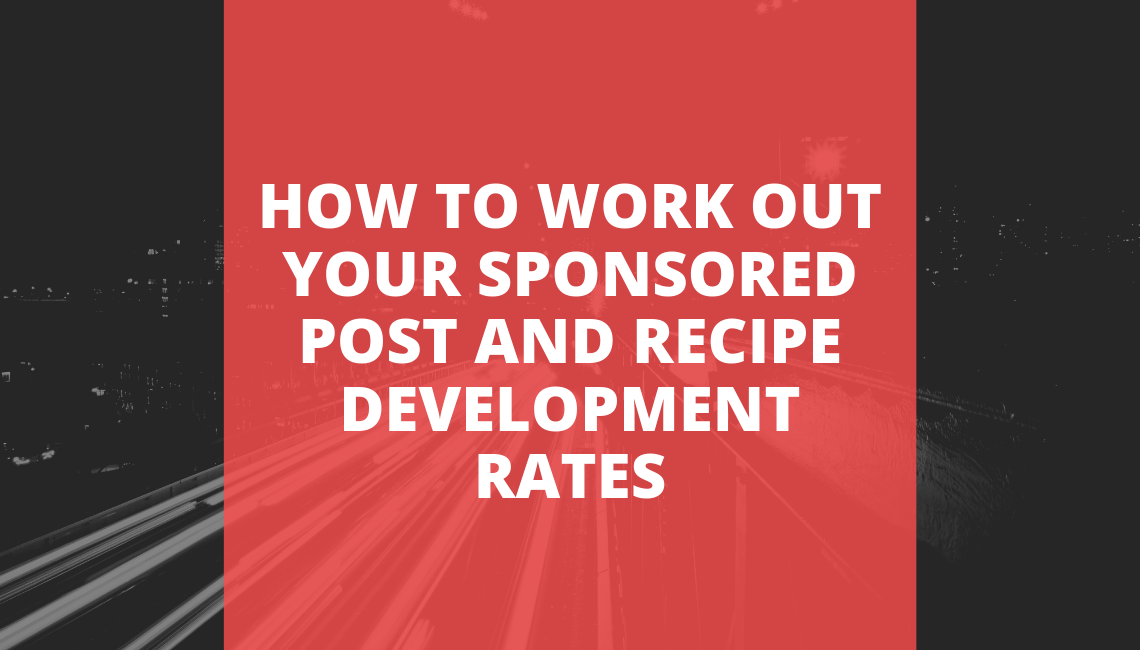The first time I was asked to provide my recipe development rates I was stumped. I had no idea what to charge for recipe development, so I asked my fellow bloggers for advice.
As helpful as my fellow food bloggers can be, it’s all very hush hush when it comes to talking about rates, and I wasn’t able to find anyone who would share their rate with me, or give me an idea on what to charge.
I understand that people aren’t comfortable discussing money, but as a first timer in the recipe development sphere it was difficult to come up with a rate without some guidance, especially considering you can’t do price research looking at what competitors charge, which is the norm in most industries, so, I plucked a figure out of the air, sent it back to my client, and hoped it was within their budget. Thankfully it was, and I won the work, but as time has gone on I realised that first rate I quoted was far too low to cover my time and effort.
Over the years I’ve come up with a system that works for me, and hopefully, might help you when it comes time to work out, or even revise your sponsored post and recipe development rates. The system involves a spreadsheet and 3 steps, which I’ll share below.
Work out your operating costs. Your operating costs are the costs of running your blog, and if you’ve never worked this out before, the cost of keeping your food blog running might surprise you, and make you rethink giving away content for free. This cost should cover the following areas:
- Website hosting fees
- Blog themes or custom themes you’ve purchased
- Software costs – eg Photoshop, Lightroom, email tool subscriptions (ie. Mailchimp), paid plugins etc
- Camera equipment
- Photography props and backgrounds
- Training classes, conferences and online course fees
- Reading materials – cookbooks and other books you buy solely related to your blog
Work out your per project cost. These are costs relating to the project or service you are offering. In the case of recipe development this might include:
- Food required to develop the recipe
- Props and backgrounds that are purchased for the specific project
- Work out how many projects and commissions you worked on last year.
Now open up your spreadsheet and list your costs and allocate them to either a column for operating costs or a column for project specific costs. Again, referring to the previous year as to expected costs is a good indicator. Did these numbers scare you? They scared me when I finally sat down and worked it all out.
Items such as photography equipment and some software licenses don’t need to be repurchased in full each year. For example you might only upgrade your Photoshop license every 2 years or your camera every 3. So, for example your camera and lens cost your $1,500 and you expect to replace the camera and upgrade the lens every 3 years. In which case the operating cost of your camera is $500 per year.
Sponsored Post Rate
Total all the items in your operating costs column and divide this by the number of projects you expect to receive in the year to come up with the amount you need to earn per project to cover your operating costs. Now, take this rate and multiply it by 2, and this is your basic sponsored post rate where you will not only cover your costs, but make a small profit.
Also Read: Get Sponsored – How To Get Sponsored For Your Business
If the number looks too scary and you aren’t comfortable charging that, then you might like to multiply by 1.75 or 1.5, but keep in mind that you are lowering your ability to earn a profit.
EXAMPLE
Total operating costs $900
Number of projects 11
Per project rate to cover costs $82
Sponsored post rate $164
Obviously this calculation doesn’t take into account the size of your blog or your social media influence. If your blog has a reasonably large following you might like to multiply this rate by 3 or 4 to come up with a figure that not only covers your cost, but also reflects your reach.
Recipe Development Rate
For your recipe development rate total the items in your per project cost column and add this to your operating costs, and this is the rate, per project, you need to earn to just cover your costs. As recipe development involves a considerably more substantial effort than a simple sponsored post, I would suggest multiplying this rate by 3. If the figure scares you, you could drop it down to 2.5 but again, keep in mind you are lowering your profit margin.
EXAMPLE
Operating costs $900
Per project costs $250
Total $1,150
Number of projects 11
Per project rate to cover costs $105
Recipe development rate $315
Don’t Be Afraid To Revise Your Rates
I suggest revisiting your rates every 6 months at a minimum, but preferably every 3 months. Look at the projects you’ve worked on in that time. Did the rate you charge cover your costs and did any profit your earned make it worthwhile? If not, update your costs if there were costs your initially missed when setting your rate, and rework your charge rate.
There’s no right or wrong way to work out your rates. This process happens to work for me, but if you have another method, share it below.
- How To Create A Safe And Comfortable Home Environment For In-Home Care In Boca Raton? - July 16, 2024
- 10 Trendy Black Nail Ideas To Elevate Your Nail Game - May 6, 2024
- Getting A Free Divorce In Virginia? Here’s What To Expect - April 24, 2024







No Comments